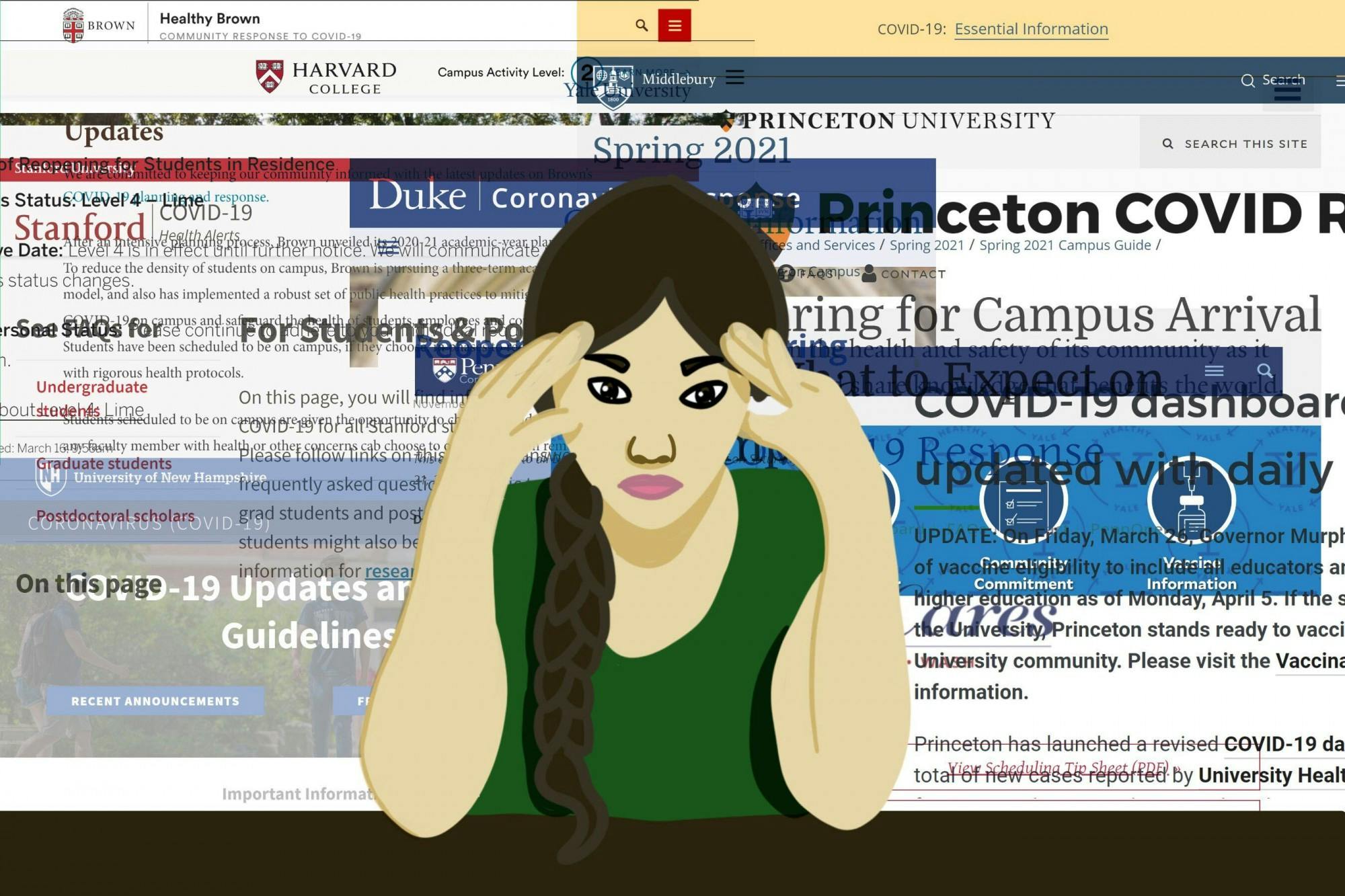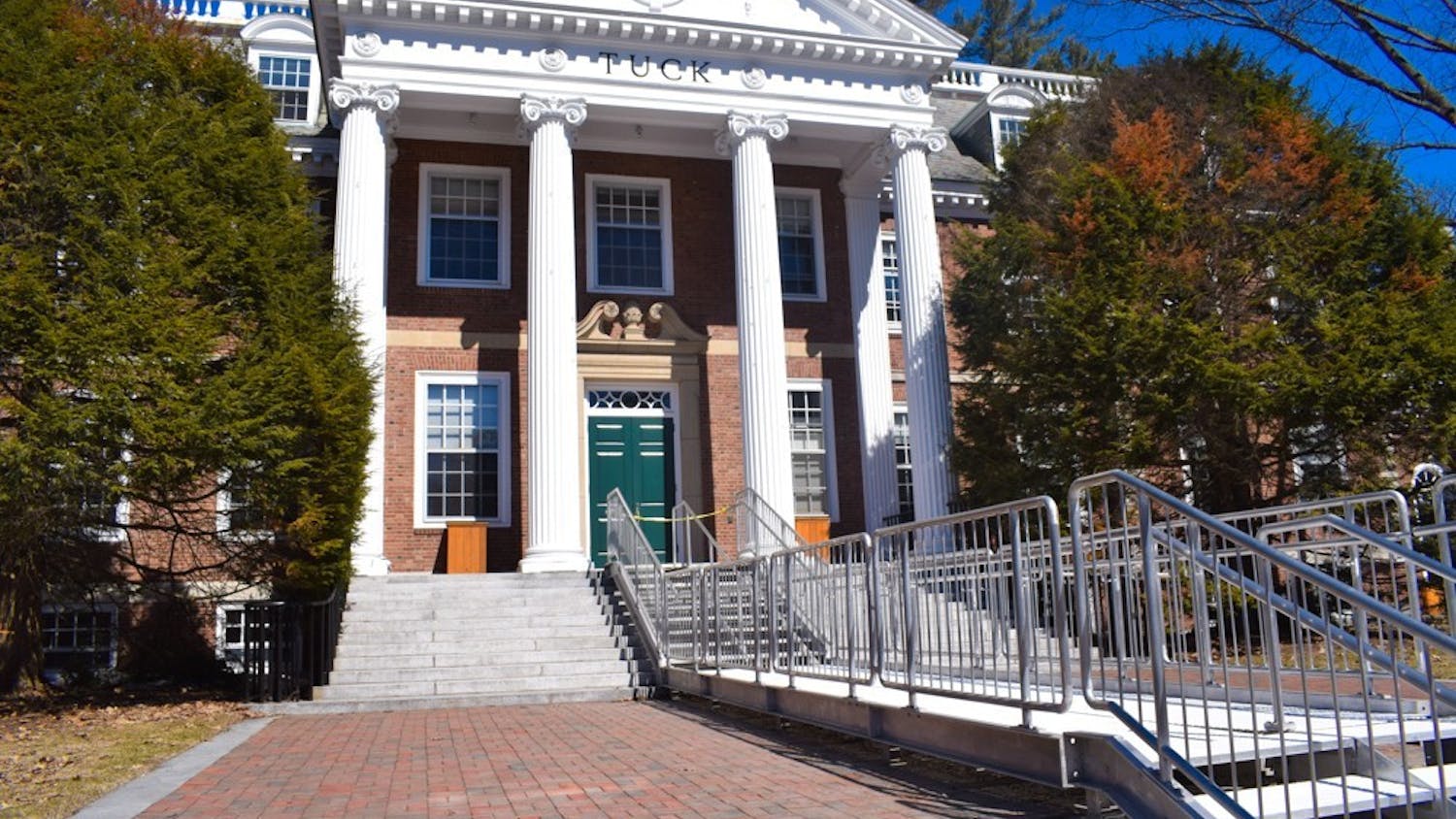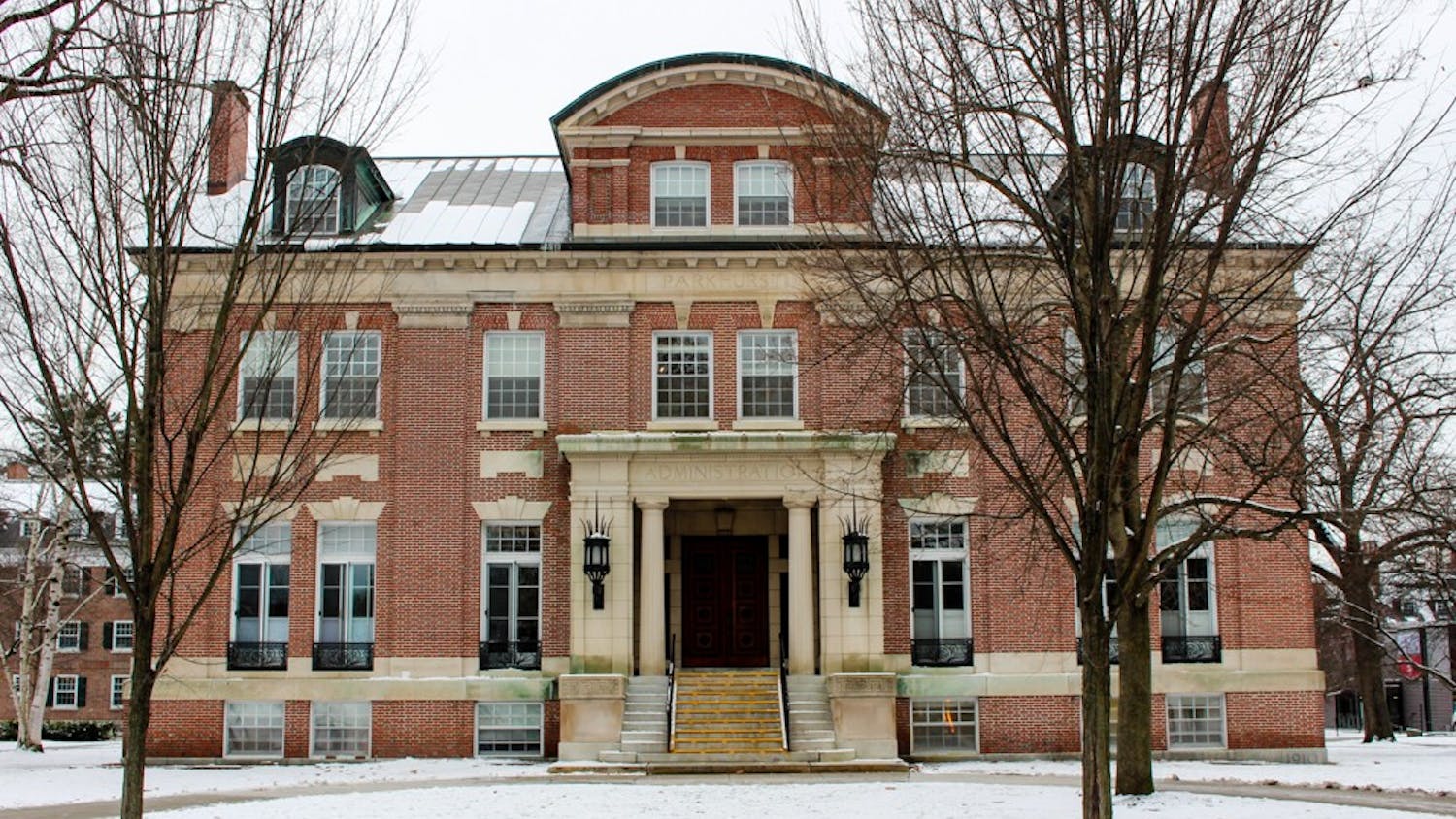Since the start of the COVID-19 pandemic, colleges across the country have been tasked with an unusual challenge: how to balance protecting public health, looking out for student mental well-being and preserving the college experience. Dartmouth has been criticized by some students for its strict limitations on socialization, small selection of in-person classes and unequal term prioritizations across class years. But is there a way for colleges to avoid these issues without sacrificing community safety? Let’s look at how Dartmouth’s reopening plan compares to its peer schools.
How many students are allowed on campus?
In June, Dartmouth announced its plan to welcome more than half of the student body back to campus. Under the plan, most students would spend two out of Dartmouth’s four terms on campus, with each class year receiving priority for certain terms. Dartmouth has not strayed from their original plan, and this spring, the College is still housing roughly half of the student body.
Not every school managed to open its campus to undergraduates last fall. Within the Ivy League, Columbia University, Princeton University and the University of Pennsylvania reversed their initial decisions to invite students back to campus and shifted to almost entirely remote learning, barring special circumstances for individual students. Yale University invited about 60% of its student body to live in on-campus housing for fall term, and Harvard University invited approximately 40%. Brown University temporarily changed their academic calendar to create three terms instead of the usual two semesters. Sophomores, juniors and seniors were invited back on campus for the fall term, and freshmen were invited back on campus for the spring and summer terms. Cornell University was the only Ivy to allow all undergraduate students back on campus.
Some schools revised their policies for the spring term, and colleges that had previously been primarily online welcomed most or all undergraduates to campus this spring, including Princeton and Penn. Brown also increased the number of undergraduates allowed on campus for spring term. Columbia extended on-campus housing privileges to seniors and some juniors after a mostly online fall, but sophomores and freshmen still could not get housing without extenuating circumstances.
How many in-person classes are offered?
Dartmouth’s classes have been almost entirely online since last spring, and there are only 10 fully in-person classes being offered this spring — .8% of total offerings — in addition to 39 courses with optional in-person components. However, a significant number of these hybrid classes are graduate school courses.
Compared to some schools, though, Dartmouth’s in-person offerings are generous —at Harvard, for example, all classes are taught completely online. However, many schools have managed to get more students in physical classrooms. Cornell, to name one, is offering 35% of its courses fully in-person.
Small liberal arts colleges in rural communities, such as Middlebury College and Colby College, seem to have been more lenient about offering in-person classes. At Middlebury, 25% of classes were taught fully in-person and 27% were hybrid. Colby had even more in-person learning opportunities, with only roughly 25% of classes fully remote.
Dartmouth’s primarily remote learning model is in line with some peer schools that did not allow all students to live on campus. However, the College’s approach seems conservative when compared to other small, rural schools that have managed to keep Zoom fatigue at bay.
How has the student body reacted to the reopening plan?
It is difficult to generalize the mental health of an entire student body. Some students like Alexandra Ma ’24 are grateful for the in-person opportunities Dartmouth students do have, like the ability to go on walks with friends and eat inside the dining halls, and she believes being allowed to socialize with friends is freedom enough. Many students also appreciated that the College provided outdoor activities last winter by offering ice skating on the Green and cross-country skiing on the golf course.
However, other students have criticized Dartmouth for creating a culture of fear and harming student mental health by abruptly removing students from campus for violating COVID-19 policies in the fall. The College now gives first-time offenders of COVID-19 guidelines a written warning if the violation is relatively minor, but will send students home if they miss too many testing appointments or attend a large gathering.
Students at other colleges are also grappling with changes. Brown shortened semesters from 17 weeks to 14 weeks, and Dana Herrnstadt, a freshman at Brown, said that the condensed schedule has led to “burnout” among students. Herrnstadt believes that her peers are struggling with the emotional price of COVID-19 guidelines.
“People are mostly complying with [Brown’s] restrictions because their restrictions are pretty reasonable,” Herrnstadt said. “However, it’s obviously very mentally draining for students.”
The situation seems to be similar at Duke University. Shikhar Gupta, a senior at Duke, says that while his perspective is not necessarily representative of the entire student body, he has seen many people feeling “a little isolated and a little lonely.” Gupta thinks that one of the biggest contributors to problems with mental health at Duke has been the rigor of their academic calendar — Duke condensed their semesters into a shorter time frame and gave students fewer breaks than usual.
Did we slow the spread of COVID-19?
Since July 1, 2020, Dartmouth has had an overall COVID-19 test positivity rate of .21%, according to Dartmouth’s COVID-19 Dashboard. Until an outbreak at the end of winter term, cases were consistently low. At that outbreak’s peak, however, there were 143 positive cases and over 300 students in isolation. Isolation and testing measures seemed to contain the outbreak by the end of the term — for the week of March 28, Dartmouth’s COVID-19 positivity rate was .19%
If we look at last week’s COVID-19 test positivity data from other colleges’ respective COVID-19 dashboards, Cornell’s rate was .07%, Penn’s was .55%, Princeton’s was .13% and Yale’s COVID-19 test positivity rate for the last 7 days was .56%.
Overall, while it is difficult to make a direct comparison, Dartmouth’s COVID-19 test positivity rates do not stray too far from those of its peer schools.
And so, the original question remains: How can colleges protect public health, look out for student mental well-being and preserve the college experience? Unfortunately, there doesn’t seem to be an easy solution to this problem. While smaller colleges in rural communities have been able to bring more students back to campus and offer more in-person classes, all colleges have had to place significant restrictions on student life. However, hope is on the horizon: the rise in vaccination rates might give way to an upcoming academic year that resembles those before the pandemic.
Arielle Feuerstein ’24 is an English major from Bethesda, Maryland. She currently serves as the production executive editor, and in the past, she wrote and edited for Mirror. In addition to writing, Arielle enjoys crocheting, board games and walks around Occom Pond.




